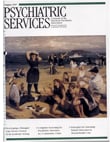A consumer-constructed scale to measure empowerment among users of mental health services
Abstract
OBJECTIVE: A scale to measure the personal construct of empowerment as defined by consumers of mental health services was developed and field tested. METHODS: After extensive development, pilot testing, and analyses, a 28-item scale to measure empowerment was tested on 271 members of six self-help programs in six states. Factor analyses were used to identify the underlying dimensions of empowerment. To establish the scale's reliability and validity, responses were factor analyzed, and other analyses were conducted. RESULTS: Analyses revealed five factors: self-efficacy-self-esteem, power-powerlessness, community activism, righteous anger, and optimism-control over the future. Empowerment was related to quality of life and income but not to the demographic variables of age, gender, ethnicity, marital status, education level, or employment status. Empowerment was inversely related to use of traditional mental health services and positively related to community activism. CONCLUSIONS: The findings set a framework for a clearer understanding of the imprecise and overused concept of empowerment. The scale demonstrated adequate internal consistency and some evidence for validity. Further testing must be done to establish whether it has discriminant validity and is sensitive to change.



